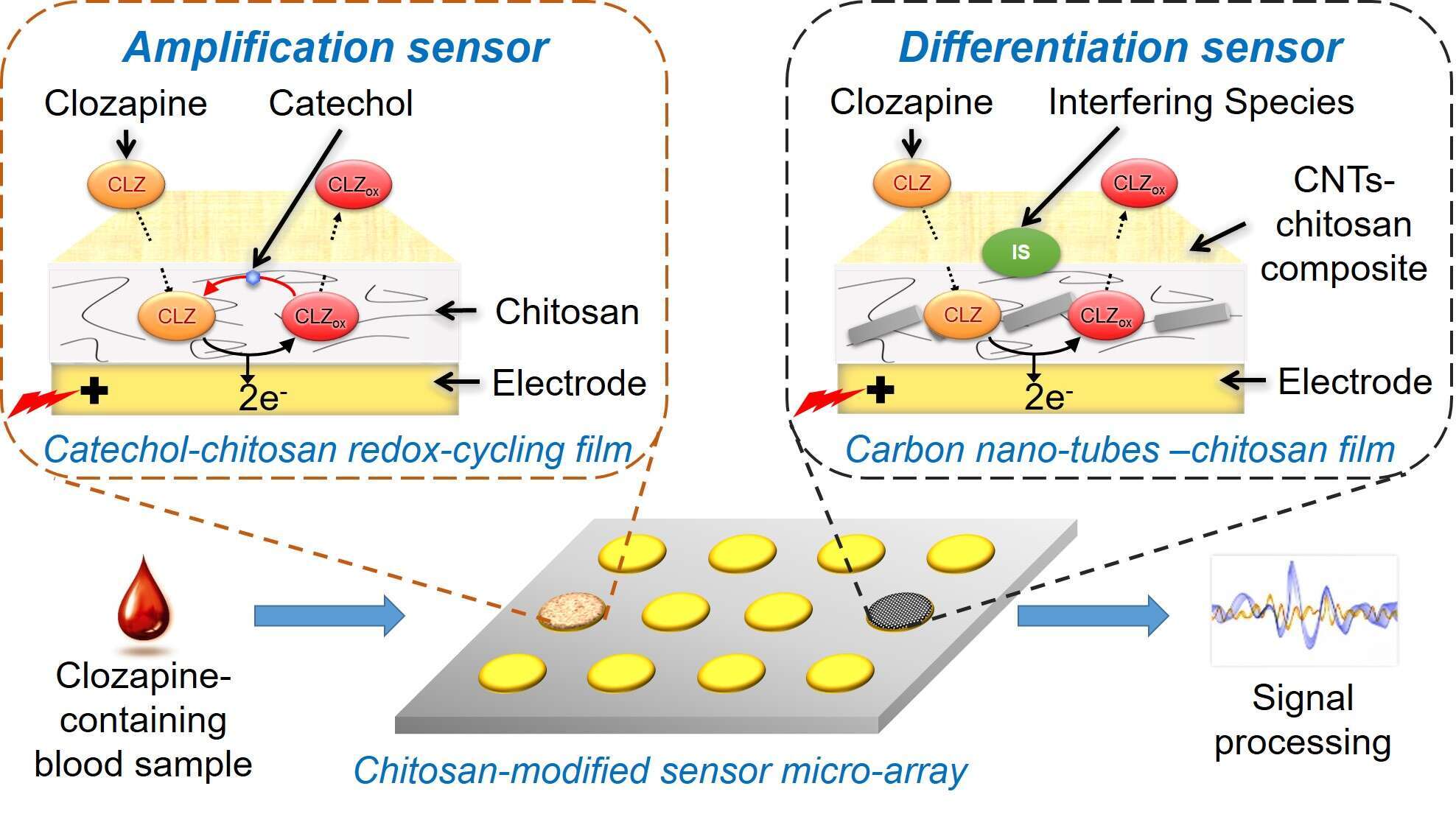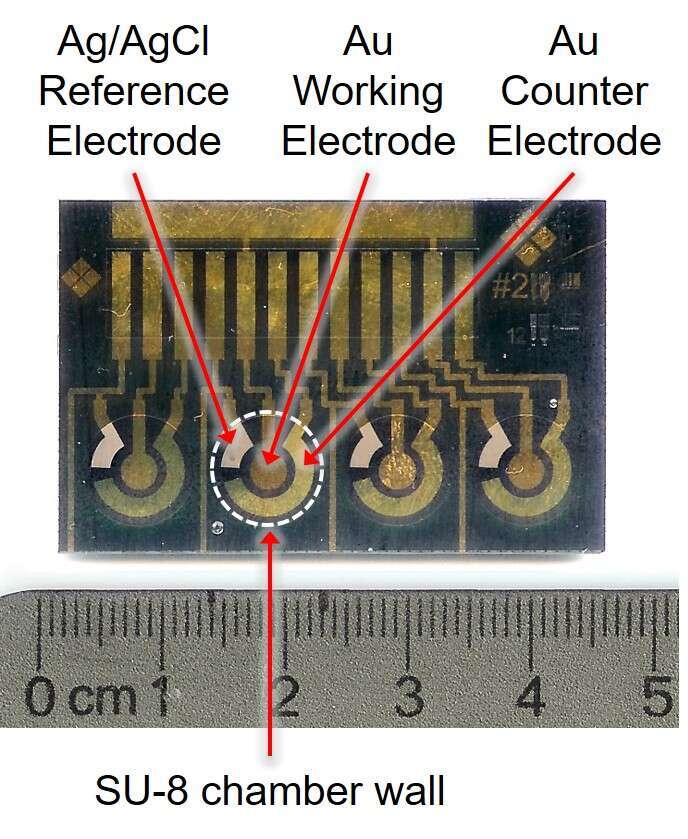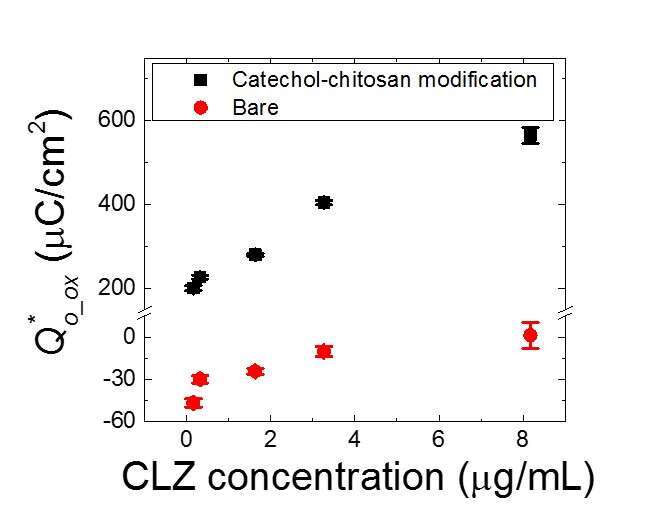
HYDROGEL-INTEGRATED ELECTROCHEMICAL BIOSENSORS FOR POINT-OF-CARE MONITORING IN MENTAL HEALTH
2Department of Electrical and Computer Engineering, Institute for Systems Research, University of Maryland College Park, College Park, Maryland
3Fischell Department of Bioengineering, University of Maryland College Park, College Park, Maryland
4Institute for Bioscience and Biotechnology Research, University of Maryland College Park, College Park, Maryland
5Maryland Psychiatric Research Center, University of Maryland School of Medicine, Baltimore, Maryland
We present the first demonstration of a hydrogel-integrated electrochemical micro-system for real-time biosensing of the antipsychotic clozapine (CLZ) towards point-of-care Schizophrenia treatment monitoring. The biosensor is based on a multi-sensor approach that integrates hydrogel chitosan-modified semi-selective sensors, i.e. a catechol-chitosan redox cycling system and a carbon nanotubes (CNTs) –chitosan composite (Figure 1). Here, we show the development of the microfabricated biosensor and the miniaturization of the redox-cycling system that results in the amplification of the electrochemical signal generated by CLZ (Figure 2). The catechol-chitosan integrated biosensor demonstrates a sensitivity of 54 µC×mL/cm2×µg and a limit-of-detection of 0.8 µg/mL (Figure 3), that enables detection in high interference biological samples such as Schizophrenia patients’ serum.



Figure 1 (top): Scheme of the multi-sensor approach that is based on chitosan-modified amplification and differentiation electrochemical biosensors.
Figure 2 (bottom left): Photograph of the microfabricated biosensor (3 cm × 4.5 cm).
Figure 3 (bottom right): CLZ dose response characteristics of the biosensor integrated with bare and catechol-chitosan modified gold electrodes.
References:
1. H. Ben-Yoav, T.E. Winkler, E. Kim, S.E. Chocron, D.L. Kelly, G.F. Payne, R. Ghodssi, Redox cycling-based amplifying electrochemical sensor for in situ clozapine antipsychotic treatment monitoring, Electrochimica Acta 130, p. 497, 2014.
2. H. Ben-Yoav, S.E. Chocron, T.E. Winkler, E. Kim, D.L. Kelly, G.F. Payne, R. Ghodssi, An electrochemical micro-system for clozapine antipsychotic treatment monitoring, Electrochimica Acta 163, p. 260, 2015.
3. D. L. Kelly, H. Ben-Yoav, G. F. Payne, T. E. Winkler, S. E. Chocron, E. Kim, V. Stock, G. Vyas, R. C. Love, H. J. Wehring, K. M. Sullivan, S. Feldman, F. Liu, R. P. McMahon, and R. Ghodssi, Blood draw barriers for treatment with clozapine and development of point-of-care monitoring device, Clinical Schizophrenia & Related Psychoses, 2015 (In Press).
Powered by Eventact EMS